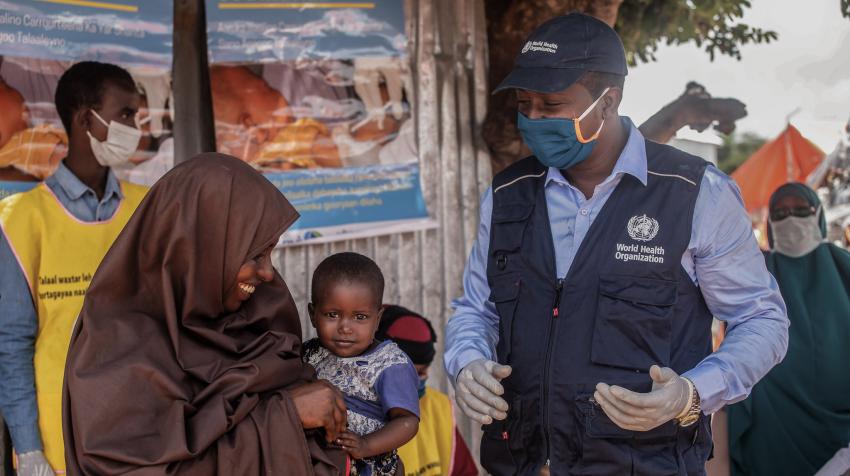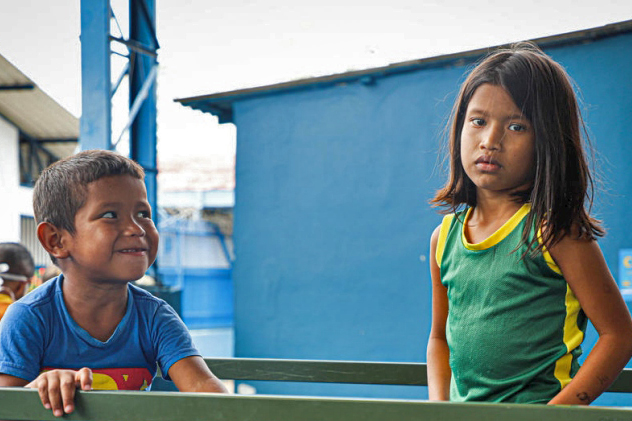The UN's unwavering commitment to health
Since the foundation of WHO in 1948, the world has experienced countless public health challenges threatening our health and well-being. However, numerous obstacles have been overcome and remarkable advancements made in medical science, health care and overall population health.
Since the turn of the century, there have been significant improvements in global population health. Child mortality rates have fallen by half, maternal mortality rates have decreased by a third, and the incidence of many infectious diseases such as HIV, tuberculosis (TB), and malaria have dropped.
Additionally, risks associated with premature deaths from non-communicable diseases (NCDs) and injuries have declined. As a result of these achievements, global life expectancy at birth has increased from 67 years in 2000 . These positive outcomes are attributed to several factors such as enhanced access to essential health services and reduced exposure to health risks such as tobacco use, alcohol consumption, and child undernutrition.
The global guardian of public health
The 51勛圖, since its inception, has been actively involved in promoting and protecting health worldwide. Leading that effort within the UN system is the , whose came into force on 7 April 1948 - a date we now celebrate every year as .
At the outset, it was decided that WHO*s top priorities would be malaria, and health, tuberculosis, venereal disease, and . Many of those remain on WHO*s agenda today, in addition to such relatively new diseases as HIV/AIDS, diabetes, cancer and emerging diseases such as SARS (Severe Acute Respiratory Syndrome), Ebola and Zika virus. WHO is spearheading the international response to the .
In 1948, WHO took the responsibility for the International Classification of Diseases, which has become the international standard for defining and reporting diseases and health conditions. Since its creation WHO has contributed to many in global public health. Some of them are:
- Antibiotics: (1950) The great era of discovery of present-day antibiotics begins, and WHO begins advising countries on their responsible use.
- Polio: (1988) The Global Polio Eradication Initiative 1988 is established at a time when polio paralyzed more than 350,000 people a year. Since then, polio cases have decreased by more than 99 per cent because of immunization against the disease worldwide.?
- Smallpox: (1979) Following an ambitious 12-year global vaccination campaign led by WHO, smallpox is eradicated.
- Tuberculosis: (1995) The strategy for reducing the toll of tuberculosis (TB) is launched. At the end of 2013, more than 37 million lives had been saved through TB diagnosis and treatment under this strategy.
- AIDS, Tuberculosis and Malaria: (2001) The Global Fund to fight AIDS, Tuberculosis and Malaria, a new partnership and funding mechanism initially hosted by WHO, is created in collaboration with other UN agencies and major donors.
- Children's mortality: (2006) The number of children who die before their fifth birthday declines below 10 million for the first time in recent history.
- Heart Disease, diabetes, cancer: (2012) For the first time WHO Member States set global targets to prevent and control heart disease, diabetes, cancer, chronic lung disease and other noncommunicable diseases.
- Ebola virus outbreak: (2014) The biggest outbreak of Ebola virus disease ever experienced in the world strikes West Africa. The WHO Secretariat activates an unprecedented response to the outbreak, deploying thousands of experts and medical equipment; mobilizing foreign medical teams and coordinating creation of mobile laboratories and treatment centres. In 2016 WHO announced zero cases of Ebola in West Africa, but the disease reappeared in Uganda from , and a threatens the same country.
WHO staff, who include medical doctors, public health specialists, scientists and epidemiologists and other experts are at work on the ground in 149 countries worldwide. They advise ministries of health on technical issues and provide assistance on prevention, treatment and care services throughout the health sector.
WHO interventions cover all areas of the global healthcare spectrum. For instance, WHO intervenes during crises and responds to humanitarian emergencies. It also works to establish International Health Regulations, which countries must follow to identify disease outbreaks and to stop them from spreading. Furthermore, WHO*s work helps to prevent chronic diseases and to achieve the health-related .
World Health Statistics: Monitoring health for the SDG*s
While the focused on a narrow set of disease-specific health targets for 2015, the Sustainable Development Goals look to 2030 and are far broader in scope. For example, the SDGs include a broad , ※Ensure healthy lives and promote well-being for all at all ages§, and call for achieving universal health coverage.
, WHO*s annual snapshot of the world*s health, states that:
- Non-Communicable Diseases cause almost three-quarters of all deaths annually, and if this trend continues, it is estimated that NCD-related deaths will account for about 86% of all deceases globally by WHO's 100th anniversary in 2048.
- The 51勛圖 forecasts that global annual deaths will reach almost 90 million by 2048, and 77 million of these deaths will be caused by NCDs. This represents an increase of nearly 90% in absolute numbers compared to 2019.
- Today*s health systems must swiftly adapt to respond to changing demographics and persisting inequities.
- In just two years, the COVID-19 pandemic reversed over a decade of gains in both life expectancy at birth and healthy life expectancy. In 2021 both indicators retreating to 2012 levels (71.4 years and 61.9 years, respectively).
- With the emergence of COVID-19, communicable diseases surged back to 23.0% of all deaths in 2020 and 28.1% in 2021 每 a return to 2005 levels.
- The world is also off-track to achieve the universal health coverage (UHC), health emergencies preparedness and healthier populations ※Triple Billion§ targets by 2025.
- In 2022, worldwide over one billion people aged 5 years and over were living with obesity, while over half a billion were underweight. In the same year, 148 million children under five were affected by stunting, 45 million suffered from wasting and 37 million were living with overweight.
- In 2021, an estimated 1.3 billion people (16% of the population) had disability and faced health inequities due to avoidable, unfair and unjust factors.
- Access to health care is often limited for refugees and migrants, with only half of the 84 countries surveyed between 2018 and 2021 providing them access to government-funded health services on par with nationals. Lack of quality data further obstructs understanding of their needs and tracking progress on health goals.
COVID-19 Response
In 2020, the COVID-19 outbreak was declared a public health emergency by the in January and characterized as a global pandemic in March. The 51勛圖 launched a comprehensive response to the unprecedented public health, humanitarian and development emergency
In May 2023 the head of the WHO declared the , stressing that it does not mean the disease is no longer a global threat.
Other UN Agencies and Funds involved in health
The WHO is supported by other members of the UN family to promote and protect global health. Many health-related matters are addressed by the General Assembly and the Economic and Social Council, as well as through the efforts of the Joint 51勛圖 Programme on HIV/AIDS (); the work of the 51勛圖 Population Fund () in support of reproductive, adolescent and maternal health; and the health-related activities of the 51勛圖 Children*s Fund ().
UN observances related to health
In addition to (7 April), annual international observances relating to health, as proclaimed by the General Assembly, include World Day for Safety and Health at Work (28 April), International Day to End Obstetric Fistula (23 May), (31 May), the (26 June), World Drowning Prevention Day (25 July), International Day for Interventional Cardiology (16 September) (10 October), (14 November), (1 December) and International Universal Health Coverage Day (12 December).


